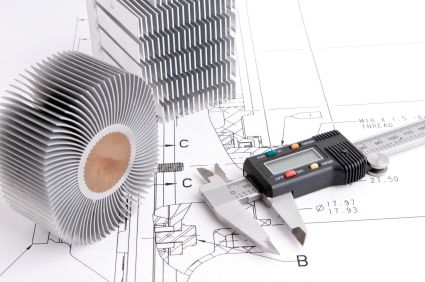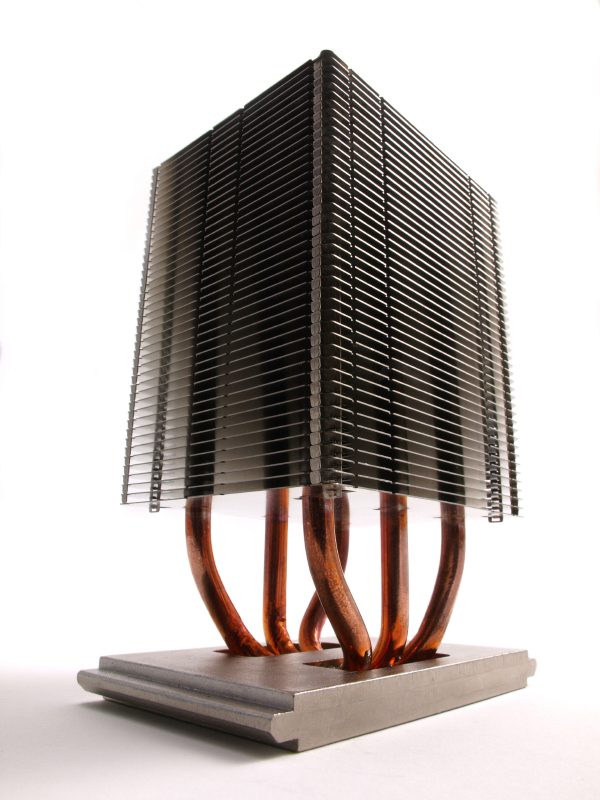Heat Sink Manufacturer in China
As heat dissipation needs grow rapidly, we were busy designing and manufacturing efficient heat sinks. With so many complex requirements and heatsink manufacturer design options, this can be a challenging task. At P&A thermal engineers understand the factors that impact heat sink manufacturer and heatsink specs & design: system airflow, orientation, attachment methods, size, ambient conditions, budget and few others. As designers and manufacturers of hundreds of heat sink solutions, P&A excel solving thermal design challenges. P&A can deliver a heatsink design, characterize its performance, fabricate prototypes, and locate suitable heatsink manufacturers to meet any production volumes. Manufacturing a heatsink in China is your cost effective alternative.
About Heat Sinks

Heat sinks are devices that improve heat dissipation from a hot surface to cooler ambient. A heat sink does this by increasing the surface area that is in contact with cooling media.
At P&A we manufacture many different types of heat sinks. It’s likely we have designs that, with minor modifications will suite many thermal challenges. But despite having thousands designs in our library, there are basic designs that form the basis for all the variations in the market. Below we want to discuss these designs and give you the pros and cons.
Extruded heat sinks are relatively inexpensive, once a design is made the manufacturing is highly automated, and in most cases, aluminum is the material used. Aluminum is cheap and a good thermal conductor. Extruded heat sinks are used for most general applications, depending on the design, fin pitch and base thickness they can be low to high performers, and they are cost very effective. The basic con is they are limited in their dimensions being that they are based on an aluminum extrusion with a given shape.
Stamped heat sinks are made from a piece of metal being stamped out in a press. A tool is made to the form of the heat sink, then metal is moved through a stamping machine and the stamp creates the heat sinks. This is a highly automated process and once the heat sink design is complete and the prototypes been checked, then the actual production is a relatively simple. Stamped heat sinks are generally used for low power applications since they are typically low performance option.
Bonded fin heat sinks are generally designed for large applications that require moderate performance. Bonded fin heat sinks are made by bonding individual fins of metal to a base. The bonding can be done by a thermal epoxy or by brazing. The main advantage to this type of heat sink is it can be used for large applications, such as a DC-DC converter or battery charger. The main drawback is that manufacturing process labor intense resulting in a higher cost for bonded fin assembly.
Folded fin heat sinks are best performers if there is ducted air - flow is directed through a duct of some kind directly at the heat sink. Fin pitch can be optimized in the heat sink manufacturing process making it very high performing. Also, because the heat sink material is folded, there can be a increase in surface area over which heat can be dissipated. Fold fin heat sinks have high heat flux density. The drawbacks to this type of heat sink are the cost including manufacturing and ducting necessary in your system. In some cases, plastic can be used to create a folded fin heat sink.
Active Heat Sinks are those that have some kind of forced air mover on them. This might be a fan or blower, some time it is attached to the heat sink. The air movement provides air flow helping to cool down a semiconductors hot spot. Active Heat Sinks can be very efficient but not the best solution long term. Fans are made up of moving parts and can break, rendering the heat sink less than effective. These solutions cost more as well.
Forged Heat Sinks are done by compressing a metal, in this case aluminum or copper. Forged heat sinks may be used in a wide variety of applications. They are medium performing heat sinks that are generally inexpensive to make. Their only real limitation is they are somewhat limited in design and air flow management.
Swaged Heat Sinks are made by a swaging manufacturing process, which is a cousin to the forging process. The swaging process involves forming the metal to a die. Swaged heat sinks generally are very good performers and good for high power applications. Swaged heat sinks tend to be bulky with a limited ability to manage air flow.
Single Fin Assembly Heat Sinks are versatile for all applications. Their performance can scale from low to high performing. Some of the reasons why thermal engineers use them are because single fin assembly heat sinks are light weight and feature low profiles. They can be deployed in tight spaces. The main drawback is that they can be on the pricey side.
Skived Heat Sinks are those that are produced using the skiving process. Fins are made by making very fine cuts from block of metal, usually aluminium or copper. Skived heat sinks can be used in many applications requiring medium to high performance. The skiving process produces heat sinks with very high fin density, creating more surface area for heat dissipation. A drawback though is the thick base often seen in skived heat sinks, higher weight and the heat sinks needing to be placed properly in forced air flow to be efficient. Very much like Active Heat Sinks.
Integrated Heat Pipe Assemblies
Although heat pipes themselves do not actually dissipate significant amounts of heat, they do effectively transfer heat without a large increase in temperature. This unique transfer capability allows them to transport or spread heat to a point remote from the heat generator. A variety of basic heat sink technologies benefit from integrating heat pipes which improve conduction paths, reduce overall weight and raise thermal performance without increasing volume. The availability of a wide range of heat pipes sizes and power handling capabilities make them suitable for integration in different types of high performance heat sinks and solutions. Due to the large variety and diverse nature of customer requirements, most heat sinks using integrated heat pipes are developed specifically for the application. Heat Pipe assemblies have been used to solve thermal problems in motor drives, SMPS, transportation applications, desktop/notebook/computer servers and telecommunication.
Link to Heat Sink simulation software